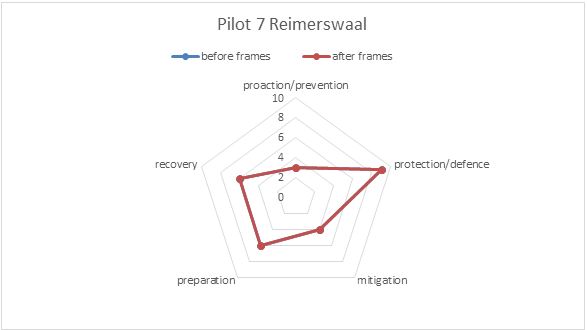LC 00412: verschil tussen versies
Geen bewerkingssamenvatting |
Geen bewerkingssamenvatting |
||
| Regel 6: | Regel 6: | ||
* {{External link|resource=Resource Hyperlink 00354|name=Rijkswaterstaat|dialog=process-linkwebsite-dialog}} | * {{External link|resource=Resource Hyperlink 00354|name=Rijkswaterstaat|dialog=process-linkwebsite-dialog}} | ||
* Waterboard Scheldestromen | * Waterboard Scheldestromen | ||
* Municipality of Reimerswaal | * {{External link|resource=Resource Hyperlink 00357|name=Municipality of Reimerswaal|dialog=process-linkwebsite-dialog}} | ||
* Veiligheidsregio Zeeland | * {{External link|resource=Resource Hyperlink 00356|name=Veiligheidsregio Zeeland|dialog=process-linkwebsite-dialog}} (Safety region Zeeland) | ||
* HZ University of Applied Sciences | * HZ University of Applied Sciences | ||
* Owners critical infrastructure (gas, water, railway-Prorail, highway, electricity-Enduris, communication) | * Owners critical infrastructure (gas, water, railway-Prorail, highway, electricity-Enduris, communication) | ||
| Regel 13: | Regel 13: | ||
==== Role of key actors ==== | ==== Role of key actors ==== | ||
The Ministry of Environment and Waterboard are responsible of L1. The Safety region has evacuation plans (L3), there was never a strong focus on evacuation or spatial measures. Within this pilot, L3 is responsibility of the Rijskwaterstaat (to protect the highway) and the Prorail (protect the railway). The Province is more responsible of L2 when possible {{Cite|resource=Resource Bibliographic Reference 00018|name=Interview with pilot manager|dialog=process-bibliographicreference-dialog}}). | The Ministry of Environment and Waterboard are responsible of L1. The Safety region has evacuation plans (L3), there was never a strong focus on evacuation or spatial measures. Within this pilot, L3 is responsibility of the Rijskwaterstaat (to protect the highway) and the Prorail (protect the railway). The Province is more responsible of L2 when possible {{Cite|resource=Resource Bibliographic Reference 00018|name=Interview with pilot manager|dialog=process-bibliographicreference-dialog}}). | ||
The role of the Province of Zeeland (pilot manager) is to give policy advise on the topic to the Regional and National Government. The role of the vital infrastructure owners is to provide information about the functionality and location of the assets. The Safety region is the expert on water safety in the Netherlands. It was a very important actor in the project because they provided a high knowledge and experience and a large network of relevant actors in the water safety sector over the whole country (interview with pilot manager, 2019). | |||
==== Main activities ==== | ==== Main activities ==== | ||
Versie van 5 jun 2019 12:36
Point of departure of FRM strategies

Stakeholders involved
- Province of Zeeland
- Rijkswaterstaat
- Waterboard Scheldestromen
- Municipality of Reimerswaal
- Veiligheidsregio Zeeland (Safety region Zeeland)
- HZ University of Applied Sciences
- Owners critical infrastructure (gas, water, railway-Prorail, highway, electricity-Enduris, communication)
Role of key actors
The Ministry of Environment and Waterboard are responsible of L1. The Safety region has evacuation plans (L3), there was never a strong focus on evacuation or spatial measures. Within this pilot, L3 is responsibility of the Rijskwaterstaat (to protect the highway) and the Prorail (protect the railway). The Province is more responsible of L2 when possible Interview with pilot manager (Anonymous, 6 januari 2019)).
The role of the Province of Zeeland (pilot manager) is to give policy advise on the topic to the Regional and National Government. The role of the vital infrastructure owners is to provide information about the functionality and location of the assets. The Safety region is the expert on water safety in the Netherlands. It was a very important actor in the project because they provided a high knowledge and experience and a large network of relevant actors in the water safety sector over the whole country (interview with pilot manager, 2019).
Main activities
The main activities/steps carried out towards improved FRM strategies, the tools applied and the actors involved are the followings:
- Get acknowledged with the area (description of the area, stakeholders analysis). The Province contacted all vital infrastructure owners to discuss the problems and the possible solutions. Once the problem was clear, the rest of stakeholders were involved (vital infrastructure owners, Regional Government, knowledge institutes, Reimerswaal municipality, Safety Region, water board and ministry of infrastructure). It was hard to get involved stakeholders from private companies, such as Prorail. Vital infrastructure owners and the Safety Region are the most important actors of the project. The actors were met individually, in small groups at a round table discussion, or large groups in workshops. Meetings combined with other projects (such as HZ RAAK project).
- Get the geodata of the electricity grid assets. The Province of Zeeland contacted (via phone, emails, meetings) the vital infrastructure owners to discuss about the flood risks and reach an agreement to keep this data confidential providing only a code number.
- Vulnerability analysis. The vulnerability analysis of adaptive critical infrastructure (roads, rail, electricity) and the cascading effects use done by Witteveen + Bos (on behalf of Province Zeeland) in collaboration with the HZ RAAK project. They did flood simulations of 30 asset points using GIS models and the location of vital infrastructure. Vitale Assets tool (HZ) was applied to analyse impact of flood scenarios on critical infrastructure and the Circle tool (Deltares) to identify the cascade-effects.
- Proposed spatial measures (to be completed based on report). Witteveen + Bos and Ecorys are conducting a cost-benefit analysis of potential spatial measures. The costs of the spatial measures proposed for L2 (build an inner dyke to prevent highway and railway from flooding) may be more expensive (about 45 million $) than measures in L1. Moreover, they may require long time implementation.
Referenties
- Baseline MONITORING SURVEY FRAMES – Baseline measurement – Pilot: Zeeland - Reimerswaal, Akkermans, R. and I. de Kubber, Province of Zeeland, 9 januari 2019.
- Transnational Monitor and Evaluation report FRAMES, FRAMES, FRAMES, 8 juni 2020.
